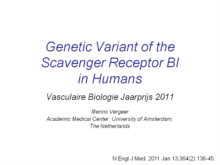 | | Genetic Variant of the Scavenger Receptor BI�in Humans |
| 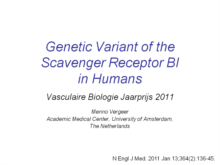 | | Genetic Variant of the Scavenger Receptor BI�in Humans |
|
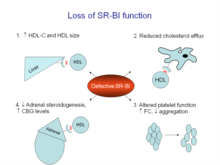 | | Loss of SR-BI function |
| 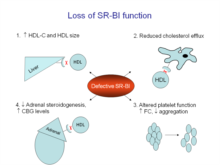 | | Loss of SR-BI function |
|
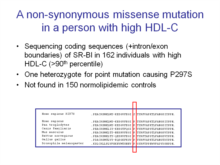 | | A non-synonymous missense mutation in a person with high HDL-C |
| 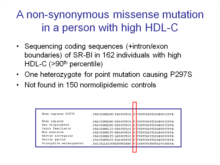 | | A non-synonymous missense mutation in a person with high HDL-C |
|
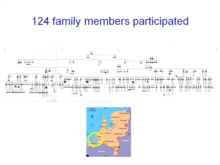 | | 124 family members participated |
| 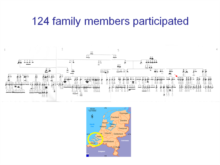 | | 124 family members participated |
|
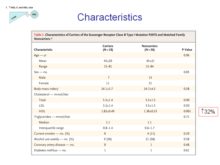 | | Characteristics |
| 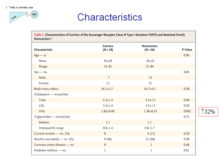 | | Characteristics |
|
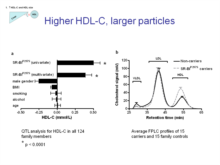 | | Higher HDL-C, larger particles |
| 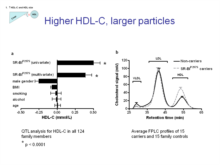 | | Higher HDL-C, larger particles |
|
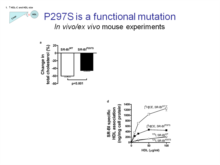 | | P297S is a functional mutation�In vivo/ex vivo mouse experiments |
| 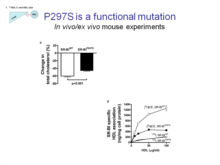 | | P297S is a functional mutation�In vivo/ex vivo mouse experiments |
|
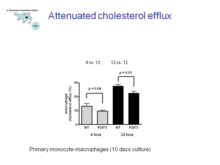 | | Attenuated cholesterol efflux |
| 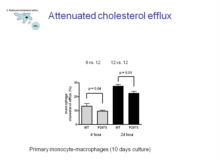 | | Attenuated cholesterol efflux |
|
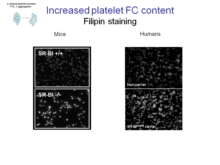 | | Increased platelet FC content�Filipin staining |
| 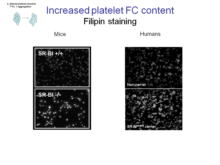 | | Increased platelet FC content�Filipin staining |
|
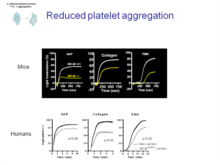 | | Reduced platelet aggregation |
| 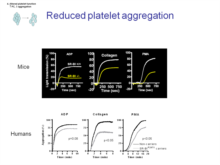 | | Reduced platelet aggregation |
|
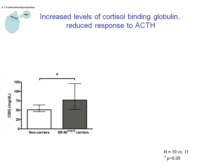 | | Increased levels of cortisol binding globulin,� reduced response to ACTH |
| 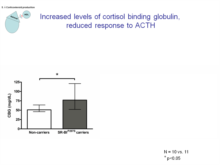 | | Increased levels of cortisol binding globulin,� reduced response to ACTH |
|
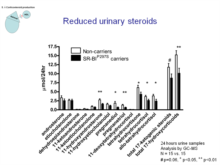 | | Reduced urinary steroids |
| 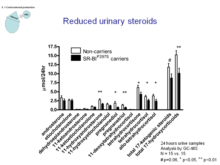 | | Reduced urinary steroids |
|
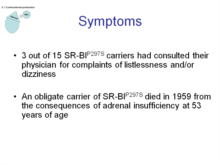 | | Symptoms |
| 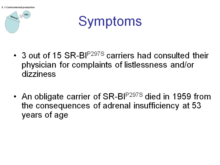 | | Symptoms |
|
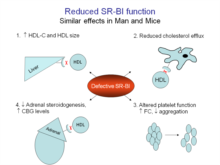 | | Reduced SR-BI function�Similar effects in Man and Mice |
| 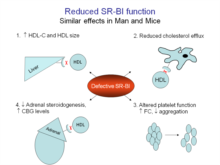 | | Reduced SR-BI function�Similar effects in Man and Mice |
|
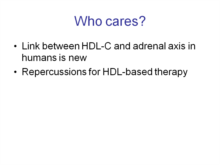 | | Who cares? |
| 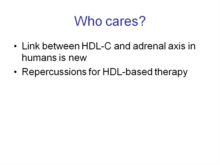 | | Who cares? |
|
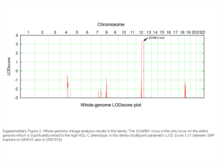 | | Supplementary Figure 2. Whole-genome linkage analysis results in the family. The SCARB1 locus is the only locus on the entire genome which is significantly linked to the high HDL-C phenotype in this family (multipoint parametric LOD score 3.31 between SNP markers rs1345015 and rs12581579). |
| 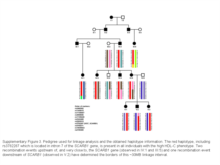 | | Supplementary Figure 3. Pedigree used for linkage analysis and the obtained haplotype information. The red haplotype, including rs3782287 which is located in intron 7 of the SCARB1 gene, is present in all individuals with the high HDL-C phenotype. Two recombination events upstream of, and very close to, the SCARB1 gene (observed in IV:1 and III:5) and one recombination event downstream of SCARB1 (observed in V:2) have determined the borders of this ~30MB linkage interval. |
|
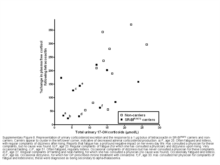 | | Supplementary Figure 8. Representation of urinary corticosteroid excretion and the response to a 1 µg bolus of tetracosactin in SR-BIP297S carriers and non-carriers. Carriers appear to cluster in the left lower corner, indicative of decreased adrenal corticosteroid production. a) F, age 25. Often fatigued and listless, with regular complaints of dizziness after rising. Reports that fatigue has a profound negative impact on her every day life. Has consulted a physician for these complaints, but no cause was found. b) F, age 23. Regular complaints of fatigue (for which she has consulted a physician) and dizzyness upon rising. Very occasional fainting. c) F, age 51. Often fatigued, regularly listless. Occasional complaints of dizziness but has never consulted a physician for these complaints. d) F, age 27. Regular complaints of fainting and near-fainting, for which she has consulted a physician (no cause was found). Occasionally fatigued and listless. e) F, age 66. Occasional dizzyness, for which her GP prescribed chronic treatment with cinnarizine. f) F, age 33. Has consulted her physician for complaints of fatigue and listlessness; these were diagnosed as being secondary to alpha-thalassemia. |
|
Deel deze pagina met collega's en vrienden: